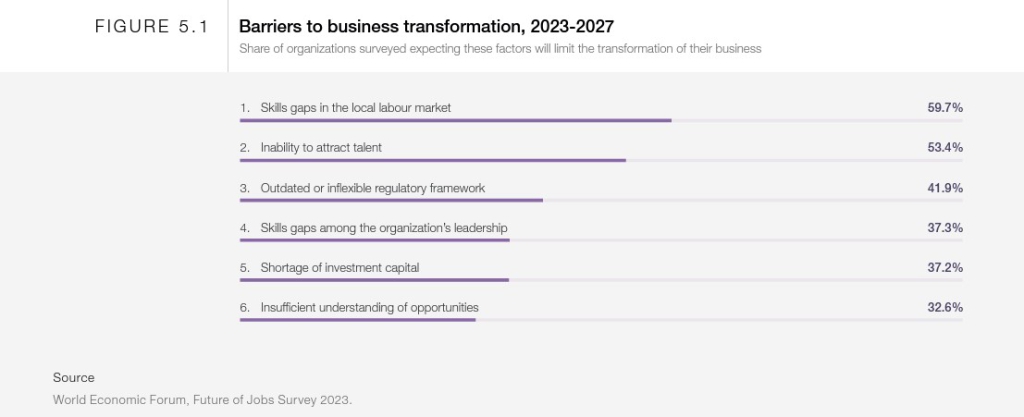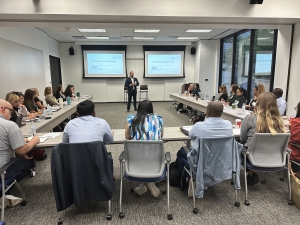BY ENERGY TECHNOLOGY COMMITTEE MEMBER JAI SHAH, KAHUNA WORKFORCE SOLUTIONS
Energy organizations face incremental pressures from investors, shareholders, government regulations, the market and society to deliver reliable energy, diversify the business, be innovative with new technology, uphold ESG standards and be a competitive workplace. Each pressure presents complexities to ensure competency and compliance of the workforce, as well as operational efficiency and ultimately, revenue generation for the business. To navigate all of this, leaders need validation that the workforce is deployable and capable of performing their job roles effectively. The criticality of competency assurance has never been more pressing.
As the pillar of energy operations, competency assurance is more than a regulatory obligation. It ensures the business and its people operate safely and effectively to meet operational demands. Investing in robust competency assurance processes and tools enables the workforce to navigate complex operating environments, be adaptable and continue to drive innovations forward for the business.
Skills are a direct reflection of an individual’s ability to understand and perform job role responsibilities, and they sit at the heart of competency assurance processes. Skills enable the organization to keep safety as the number one priority, mitigate risk as employees move across job sites and into new roles, and guide employees in performing technical tasks with precision whether they’re servicing equipment or transporting hazardous materials.
Convergence of Skills and Operational Needs
Scenario 1: A team deployed to a remote offshore drilling platform. After beginning the project, they quickly realized the gaps in skills and knowledge. Some individuals lacked machinery skills, while others lacked experience with proper safety procedures for this specific rig. As a result, concerns about safety, operational inefficiencies and damage to equipment emerged. Upon review of the situation, operations leaders realized that several team members were only 40% competent in the skills needed for this assignment. They lacked 60% of the required skills, yet they were still deployed.
Scenario 2: Facing pressures to respond to global sustainability concerns from investors and the public, an established oil and gas organization ventured into renewable energy. Leaders understood that this strategic shift needed urgency to upskill the workforce, and to reallocate resources between current and new projects. As they examined the documented skills and competencies across business units, they found inconsistencies with data points and record keeping. The urgency halted as they tried to extrapolate and understand the actual capabilities of the workforce and how they could align with the new business venture.
You could alter these scenarios in several different ways for organizations across the energy value chain in oilfield services, upstream, midstream, downstream, power or renewables. Still, regardless of how it’s spun, a lack of skills and validated data on skills hindered both organizations from the desired operational outcomes.
Operational Outcomes Tied to Workforce Skills and Capability
Industry research routinely shows that an organization’s operations reflect workforce capability. The World Economic Forum Future of Jobs Survey 2023 reports key barriers organizations see as hindrances to business performance and innovation. Across the board, the report identified workforce skills and talent as the most strategically limiting variables (Figure 1). Other research shows that 93% of organizations don’t have the people or skills to action their sustainability strategies (Institution of Engineering Technology), and 73% identified the aging workforce, loss of knowledge, and gaps in skills as a threat to safety and operations (Field Technologies).

So what can companies do to address these workforce and skill variables? McKinsey suggests streamlining operational standards and processes — standardizing and digitizing where it makes sense, building capabilities along the way, and integrating digital solutions with new processes and ways of working.
Standardizing Competency Assurance Processes with Skills Management
So what does standardization of competency assurance look like? It begins with identifying a business process that the entire organization will follow to capture, record and analyze workforce skills. As a business process, skills management consists of four phases: Curate, Assign, Assess and Develop (Figure 2). This aligns employees, managers and leaders throughout the business and provides a holistic understanding of what’s expected, what’s needed and how to improve.
- Curate a competency framework with the critical skills and competencies needed to operate the business.
- Assign skills and competencies to the workforce in a way that makes sense for your organization’s operations. Consider what’s required for specific job roles, site locations, and machinery and equipment.
- Assess employees based on required proficiency levels by qualified assessors.
- Develop employees with specifically curated development plans to close skills gaps, align workforce skills to business needs and encourage professional growth.

Achieving Operational Agility and Innovation with Skills-Based Competency Assurance
Traditional ways of managing this data in files, folders, Excel sheets or HR systems prove to be inaccessible, difficult to scale and challenging to maintain. As the industry evolves, energy organizations that fail to progress their competency assurance processes are at increased risk. Deloitte reports that only 48% of business and HR executives are confident that the human capabilities they have documented on their workforce are verified and valid, and only 39% of workers agree they have a full understanding of their skills and capabilities.
In an industry where a lapse in proficiency can result in not just financial loss, but catastrophic safety incidents, environmental disaster and reputational damage, it’s imperative leaders confidently make decisions based on trusted data. Deploying a standardized, skills-based competency assurance process can capture skills at scale to validate workforce capability, prioritize safety, decrease risk and ultimately serve as the foundation for operational agility and innovation.
ENERGY TECHNOLOGY COMMITTEE MEMBER
JAI SHAH, KAHUNA WORKFORCE SOLUTIONS

Jai Shah is the CEO and Co-founder of Kahuna Workforce Solutions. With 20+ years of practical implementation, architecture, and management experience, he is passionate about connecting HR with Operations through applied technology and rich data solutions. He specializes in guiding the development of skills applications that make a difference for end-users and deliver real business value to operationally focused environments.




